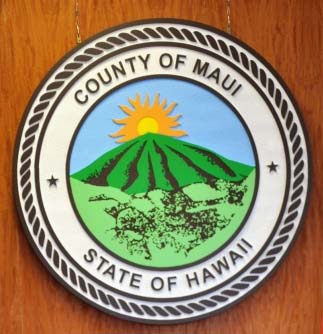Maui County General Obligation Bonds Receive AA+
Fitch Ratings has assigned an AA+ rating to the following Maui County general obligation bonds:
- $57.94 million GOs, series 2015 The bonds will sell competitively the first week of October. Proceeds will be used to fund approximately $15 million of various capital projects and to refund approximately $49 million of outstanding GO bonds (series 2005 and 2008) and loans for interest savings.
- $223 million outstanding county GOs, series 2005A,B&C, 2006A,B&C, 2008A, 2010A (taxable), 2010B, 2012 and 2014
Fitch Ratings reports that Maui County’s GO rating outlook is stable.
SECURITY
The bonds are secured by the full faith and credit of the county and an unlimited property tax levied on all taxable property within its jurisdiction.
KEY RATING DRIVERS
STRONG FINANCIAL POSITION Maui County maintains a strong financial position, supported by substantial reserves, consistently balanced operations, demonstrated revenue flexibility and prudent management practices.
TAX RATE INCREASES MODERATE VOLATILITY Assessed values experienced significant growth the last several years after a substantial decline during the downturn, but are modestly below pre-recession peaks. However, property tax receipts experienced only moderate changes due to the county’s consistent tax rate adjustments.
TOURISM-BASED ECONOMY Maui’s growing economy remains highly concentrated in the tourism sector, with hotels and resorts accounting for most major employers and taxpayers. However, Maui’s tourism sector has maintained a strong fundamental base despite volatility associated with economic cycles. County wealth levels are high and unemployment is below average.
MANAGEABLE LONG-TERM OBLIGATIONS Debt levels are low due to the state government’s responsibility for funding public education, while amortization is rapid. Liabilities for retiree benefits are mixed, with substantial pension liabilities offset by near-term plans to fully fund its other post-employment benefit liability.
RATING SENSITIVITIES
STRONG FINANCIAL PROFILE The rating is sensitive to shifts in fundamental credit strengths, including the county’s healthy financial position. Significant concentration in the county’s tourism-based economy is somewhat mitigated by demonstrated ability to adjust property taxes, the county’s largest revenue source.
CREDIT PROFILE The county serves a population of approximately 160,000 (11% of the state total) on the islands of Maui, Moloka‘i, and Lana‘i and the uninhabited island of Kāho‘olawe.
STRONG FINANCIAL OPERATIONS
The county’s strong financial operations are distinguished by high reserve levels, consistently balanced operations and revenue flexibility. The county posted an unrestricted fund balance of 32% of spending in fiscal 2014. In order to nearly fully fund its OPEB liability, the county contributed $97.2 million in fiscal 2014 to an irrevocable trust, which reduced the unrestricted general fund balance from a very high 63% of general fund spending ($165 million) in fiscal 2013. Financial flexibility is further supported by dedicated reserves for emergencies, affordable housing, open space, and other post-employment benefits.
The county achieved five consecutive years of strong operating results between fiscal 2010 and 2014 and appears likely to continue this positive trend in 2015. Deficits in fiscals 2012 and 2014 resulted from the planned drawdown of reserves for one-time purposes. The county’s fiscal 2016 budget is balanced and reflects continued prudent planning with further additions to reserves.
PROPERTY TAX RATE ADJUSTMENTS MODERATE VOLATILITY
The county has substantial ability to adjust rates to increase revenue and offset fluctuations in AV. As such, property taxes, which accounted for a high 83% of general fund revenues in fiscal 2014, experienced only modest volatility over the past 10 years. The county’s tax structure also provides for large homeowner exemptions and differential rates depending on property type. While AV fell a cumulative 25% between fiscal 2010 and 2013, the property tax levy fell by just 8% during the same period as the council approved recurring tax rate hikes. An additional rate hike in fiscal 2014 was followed by a reduction for fiscal 2015, as renewed AV growth supported increased tax revenues. AV increased by 3% in fiscal 2014, 8% in fiscal 2015, and 12.4% in fiscal 2016 and is now 5.5% below the fiscal 2010 peak. Property taxes and overall revenues declined in only three of the past 10 years, with the largest dip in fiscal 2011 of 6.3%.
Property tax rate increases have met minimal political opposition and are not subject to legal limits, so Fitch believes further revenue flexibility remains good. The county’s share of the statewide transient accommodation tax (TAT) provides the county’s second largest source of revenue (8% of general fund revenues in 2014), but growth is limited by recent state actions to cap allocations to counties.
ECONOMY REMAINS CONCENTRATED
Maui’s economy has been recovering well after suffering a steep decline in visitors during the economic downturn. Visitor arrivals fell by 23% between 2007 and 2009 while total visitor expenditures declined by 27%. Both visitor arrivals and expenditures have since recovered to levels near or above pre-recession peaks. Rising hotel revenues and occupancy rates similarly reflect the recovery of the county’s tourism base, although employment levels remain below previous highs. Unemployment rates, at 3.4% as of August 2015, are typically well below the national average and slightly above the state.
Wealth levels for the county are above average with median household incomes 20% above national levels. The county’s wealth is also reflected in real property market values of $254,000 per capita as of fiscal 2016.
Tourism remains the chief engine of the county’s economy despite increasing diversification. Approximately one-third of county employment is in the leisure and hospitality sector. Resort and time-share properties account for five of the county’s top 10 employers and nine of its top 10 taxpayers. Fitch considers this degree of concentration a credit weakness despite the recent strong performance of the county’s economy.
MANAGEABLE LONG-TERM OBLIGATIONS
Overlapping debt levels are low at just $2,000 per capita and less than 1.8% of market value, while amortization is rapid. This strong debt profile reflects the state’s responsibility for public education.
The six-year capital improvement plan is sizeable at $1 billion and reflects the broad responsibilities of county government in Hawaii. Much of the plan focuses on water, sewer, and road projects financed through non-general fund sources. No further debt issuances are anticipated before 2017.
The county is a participant in the state-sponsored employee retirement system and will likely face ongoing contribution rate increases to address a low funding ratio. The state plan reported a 61.4% funded ratio as of 2014 assuming an investment return rate of 7.75%, while Fitch estimates the funded ratio at just 56.7% assuming 7% returns. Contribution rates are set by statute and total contributions in recent years have fallen short of amounts required to amortize actuarially-determined liabilities.
The county’s most recent valuation estimates its unfunded liability for OPEBs is substantial at $359.3 million as of 2013 (0.9% of market value). However, this does not take into account the transfer of $112.5 million in reserves to a state-managed irrevocable trust in 2014 and 2015 and budgeted transfer of another $14.9 million in fiscal 2016. The county has regularly funded its actuarially-determined annual required contribution for such benefits since fiscal 2008, well in advance of a state requirement for full funding by fiscal 2019. Carrying costs for debt service and retiree benefits (net of the transfer to the OPEB trust) is affordable at 16% of governmental expenditures in fiscal 2014.










